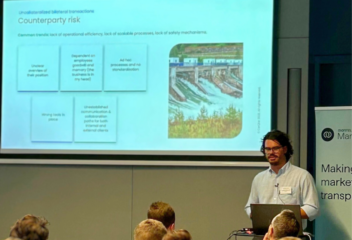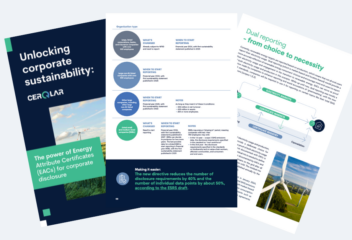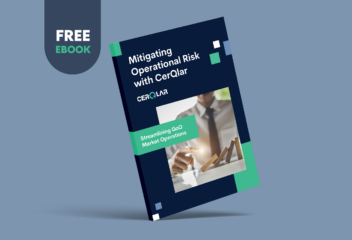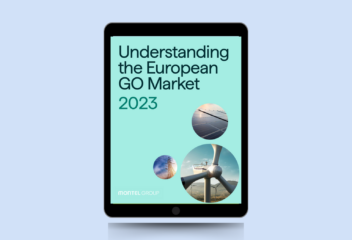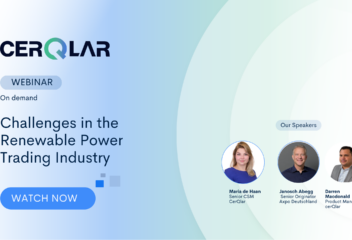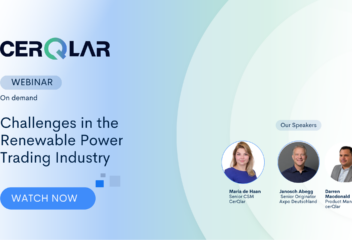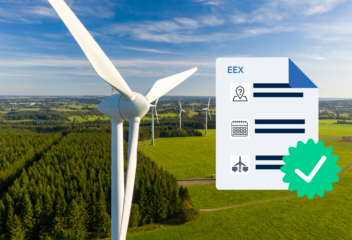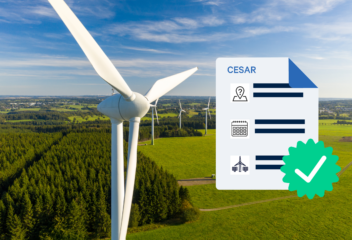Insights from the Open Markets Committee 2022
As the GoO market continues to develop, environmental awareness continues to grow, and achieving EU climate goals becomes more urgent, more countries are embracing the opportunity to begin building a renewable energy trading market.
With registries and participants weighing in from across Europe and the number of new participants rapidly growing, it can be difficult to get a clear picture of the market’s current position and its future trajectory.
That’s why the Association of Issuing Bodies (AIB) and RECS Energy Certificate Association developed the OMC (Open Market Committee) event, giving participants from across Europe and internationally the opportunity to meet and share market developments and insights.
The 2022 OMC event took place on December 1st in Brussels, and CerQlar Managing Director Timo Pentner, Legal Counsel Manuela Rodriguez, and Head of Product Management Martin Edling Andersson shared some insights from the event.
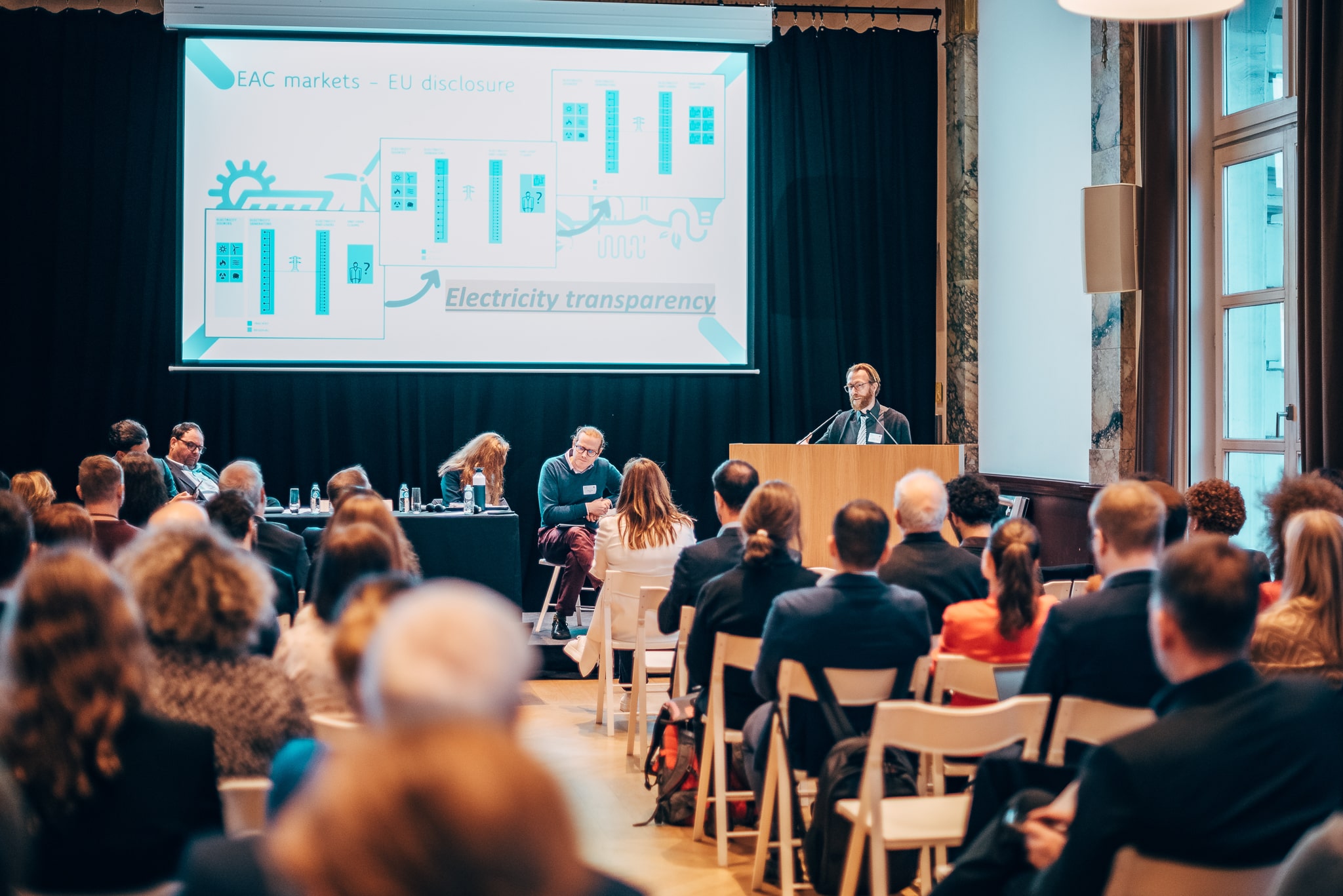
GoO prices continue to rise rapidly
One of the key points brought up at the event was the effects of the GoO market’s rapid growth and development. As mentioned above, environmental initiatives and social awareness have led the market to accelerate and have raised the demand for renewable energy certificates. The increasing demand and rising number of market participants mean that the value of GoO prices increased exponentially as well.
While this is a net positive, some market participants are concerned that it is too much too early in the market lifecycle. Dania Piccioli from Nvalue explained to participants how in the last ten years, the market has achieved an increase close to 400%, a positive trajectory that the market has not only maintained but is expanding. To handle this intense surge of certificates, traders will need to adopt technological and automotive solutions to better manage increasingly complex trades and intricate portfolios.
New messaging schemas aim to unify the EAC market
A big announcement shared at the event was the release of new messaging schemas in 2023. Renewable energy technology is still an evolving field, and as the sector expands to include more energy types, such as hydrogen and other gases, the market will need to shift and make changes to accommodate these developments.
The AIB announced that with the release of the new messaging schemas, the association and EEX will expand to include more energy types, including independent criteria such as hydrogen and gas. This move brings the market one step closer to consolidation, which is one of the AIB’s main goals.
Unfortunately, unifying the market may not be as simple as it first seems. Geographic diversity means that local legislations and the particulars of each local registry have a strong effect on the market, impacting the way trading and certificates are managed across the EU. Martin Standera, OTE, ISU chair shared how approximately 700 million GOs are traded in cross-border transfers, and varying domain protocols mean that it’s highly unlikely that the GoO market will ever achieve total uniformity.
Certificate transparency and market evolution
Increasing social awareness means that users now want to know the origin of the power they use, and GoO certificates can help provide users with this information. Greater transparency may even offer a viable solution to other market challenges.
Manuela shared that “several legislations that have been proposed don’t necessarily align with market needs. Implementing these legislations would make it challenging to keep certificates relevant as renewable energy technology evolves.” For example, if hydrogen energy becomes outdated, will the certificate need to constantly be canceled and recreated to meet the shifting market’s needs?
Manuela also explained how market participants have suggested making GOs usable for various gasses, and when a method becomes outdated, old certificates can simply be converted and used. The problem with this approach is that it makes it very difficult to track certificates and follow the flow, particularly after a certificate has been converted. Transparency, supported by the new schema’s advances in storage and conversion tracking, helps address this challenge by making it possible to track the certificate and its origin throughout the lifecycle, making it viable to convert and trade outdated certificates until they expire or are used.
Facilitating and future-proofing trading with technology
Martin shared that many participants talked about the fact that now is the time to leverage technology to facilitate market growth. Industry scaling is impossible without the infrastructure to support it, and part of enabling technological development is by making more registries and other market tools API-enabled. As Martin shared,
“Discussions on the need for API to allow the industry to scale were very prominent on the floor at the event.”
The API-first approach was featured at the event, and one presenter shared how the market has developed to the point where APIs are no longer nice to have but a must-have.
API will allow market participants to connect their registry portfolios to external solutions such as CerQlar, which facilitates increasingly-complex trading by automating the most complex parts of the workflow and streamlining portfolio management. CerQlar includes features such as instant trade capture, online contracts, and inventory updating that give market participants easy access to the data they need to future-proof their trading and keep up with market growth and evolution. As we see more developments in the renewable energy industry, it’s clear that the future of the industry rests on the implementation of technological infrastructure.




